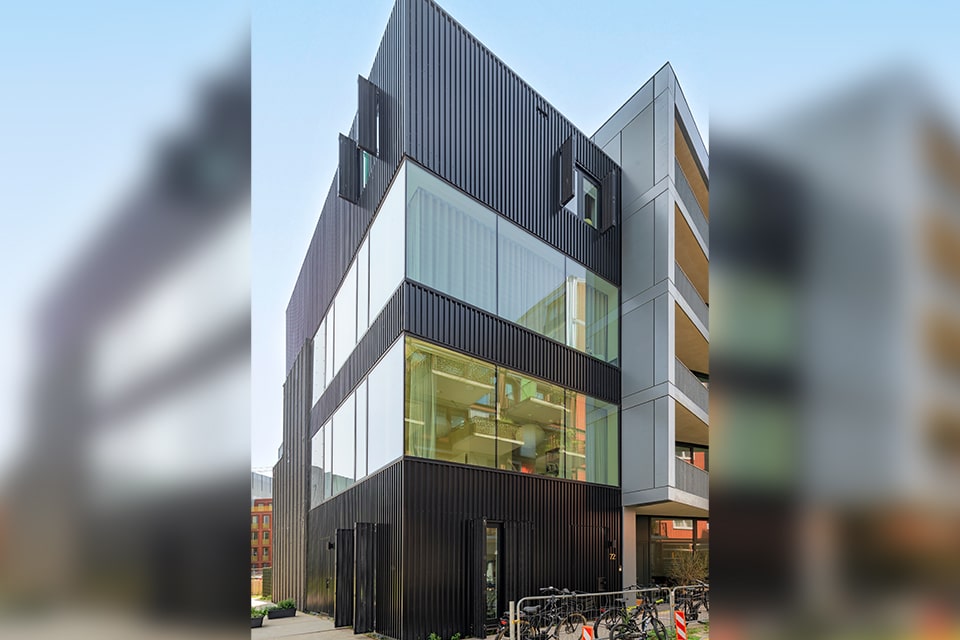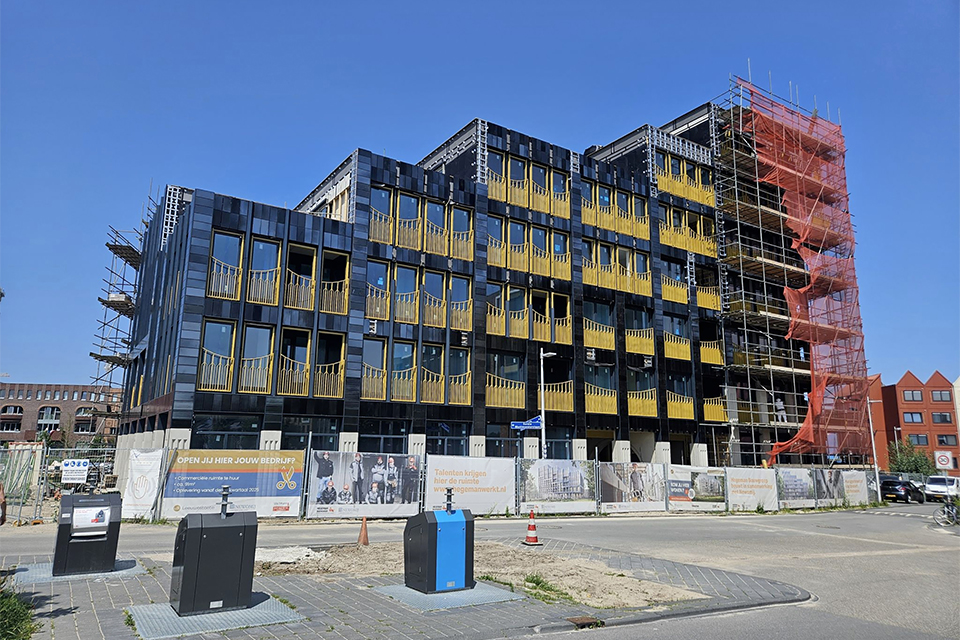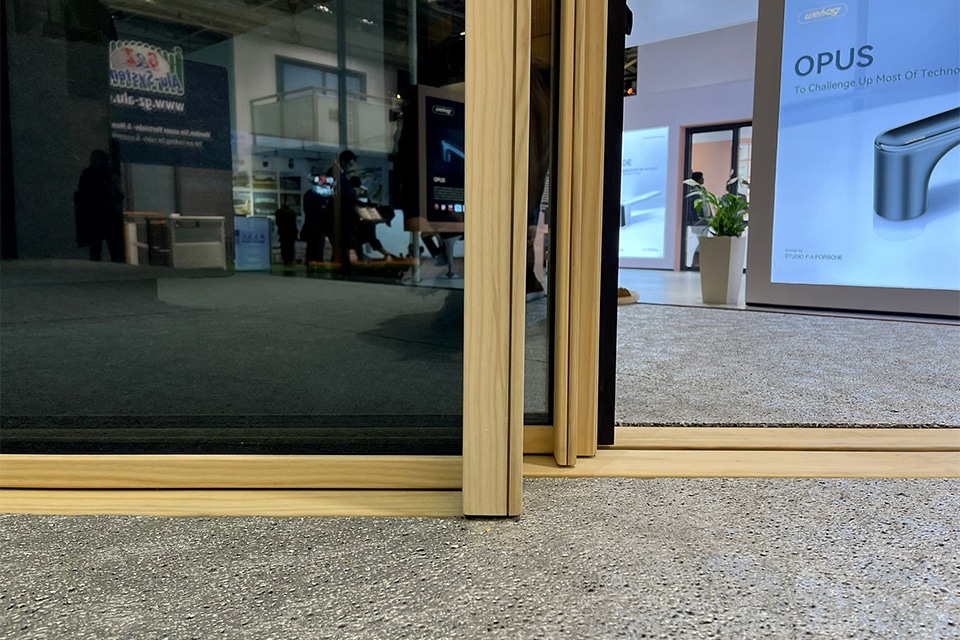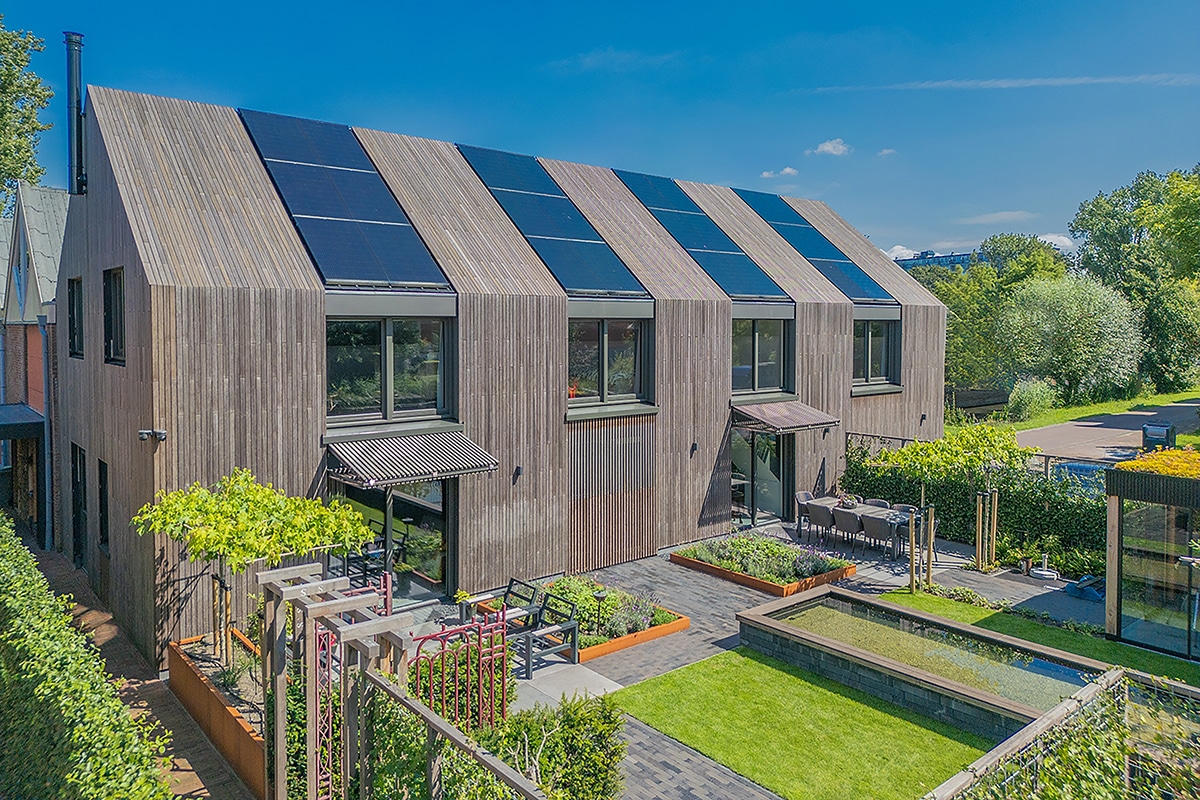
Involve shading fabric creatively in façade design
Whenever you linger under an awning fabric anywhere, whether it is on a hospitality terrace or in someone's home, chances are you will be under an awning fabric woven by the German brand swela. Within the Dutch awning industry, swela has more than once set the standard when it comes to awning fabric. In terms of raw materials, quality, colors and designs and of course when it comes to durability.
Swela constantly innovates and has a keen eye for the market, not only for the private market, but certainly also for the project market. Out of this spirit of innovation, swela has come up with a new technique for printing awning fabrics. Wouter Hof, director at swela, talks about it.
Letting creativity run wild
"No doubt everyone has seen a printed awning fabric at one time or another. Usually this is a cloth that has advertising, especially in the hospitality industry. This type of printed cloth comes from local initiatives, using various printing techniques. While the image is transmitted, guaranteeing the print is then difficult. However, we have good news: swela believes in the power of individualized design, also for awnings, parasols and garden furniture cushions. We have therefore not been idle at our company in Emsdetten and have been able to raise the concept of 'printed cloth' to a top level," says Hof. Under the name "Print on demand," swela supplies two types of printed cloth: Latexprint; a high-quality print for awnings, such as awnings and parasols.

Hof: "The weather resistance of latexprint is unprecedentedly high, as much as factor 7 to 8. This means that the beautiful, unique canvas that hangs in people's homes, above a catering terrace or on business premises can definitely take a beating. Also, the canvas is waterproof."
There is also sublimation printing; this printing method is ideal for practical use, on garden furniture cushions, beanbags and a multitude of decorative garden applications. Sublimation print in itself offers very clever design possibilities. The weather resistance of sublimation print is factor 6, suitable for advertising, themed hospitality applications and garden furniture cushions, in style with the awning fabric.
Hof outlines, "Latexprint in particular creates unprecedented opportunities for architects and designers. Namely, it offers the possibility to completely customize the appearance of the awning fabrics hanging from a facade. Imagine that as an architect you have used a recurring style element in your building design, it is now completely possible to reflect that in the awning fabric. Why is this so interesting? Because if a standard fabric from an existing collection is chosen, then in the summer the awning dominates the appearance of the facade. We at swela believe that choosing a standard fabric color for an architectural design is always a compromise. After all, there is no more choice than the collection reflects. Well, starting today, that can be different."

Order a printed cloth sample!
Print on demand has to be experienced for yourself, according to Hof. "We therefore thought it would be a good idea to make printed samples available to anyone interested in awning fabrics with Latexprint. These can be requested from our Dutch representatives. Furthermore, we like to think along with projects. Architects and designers who want to know how their design can be executed on awning fabric, we guide them through the whole process." For more information, please contact Marina Schavemaker at the mail address m.schavemaker@swela.com or with Niels Kusters at the mail address n.kusters@swela.com.




